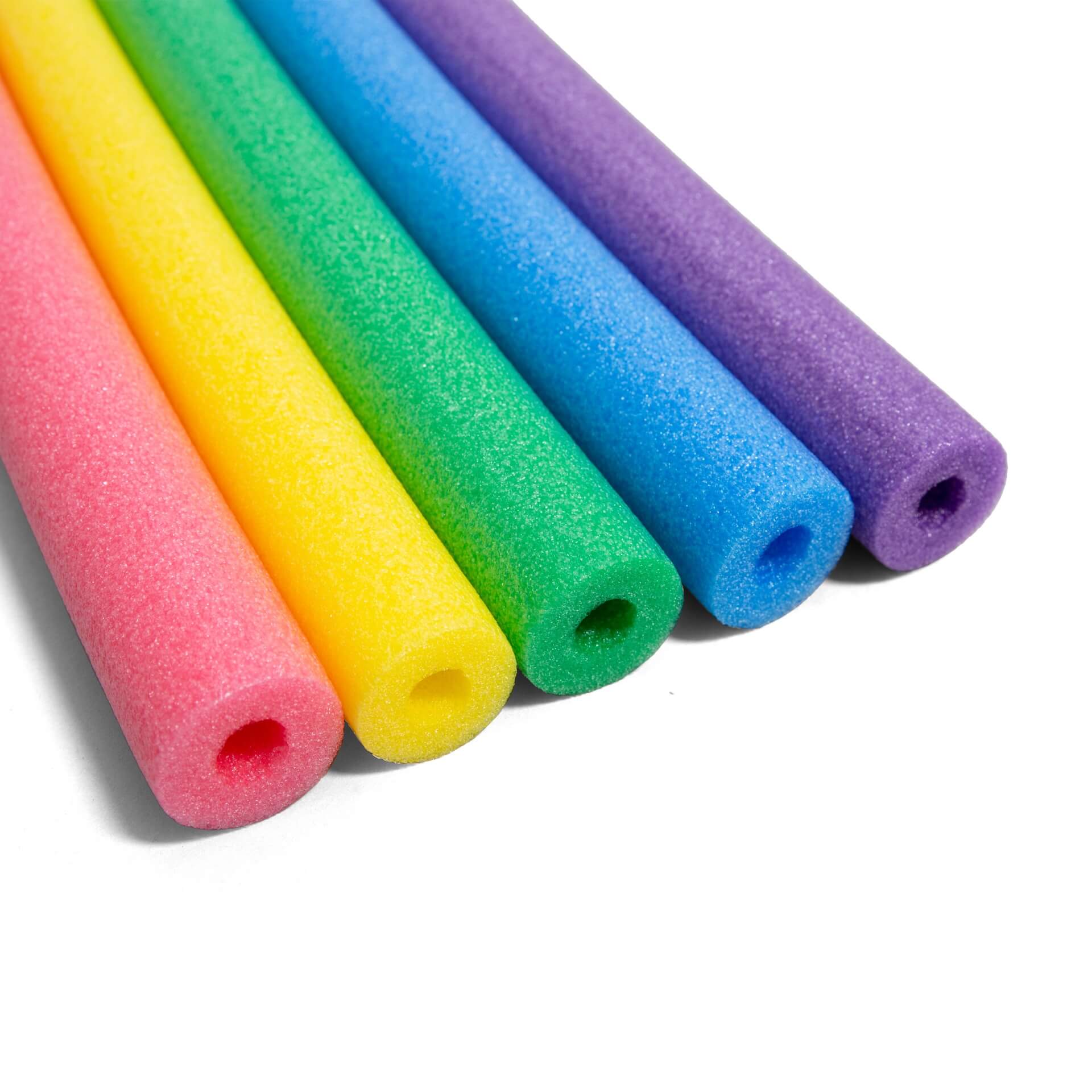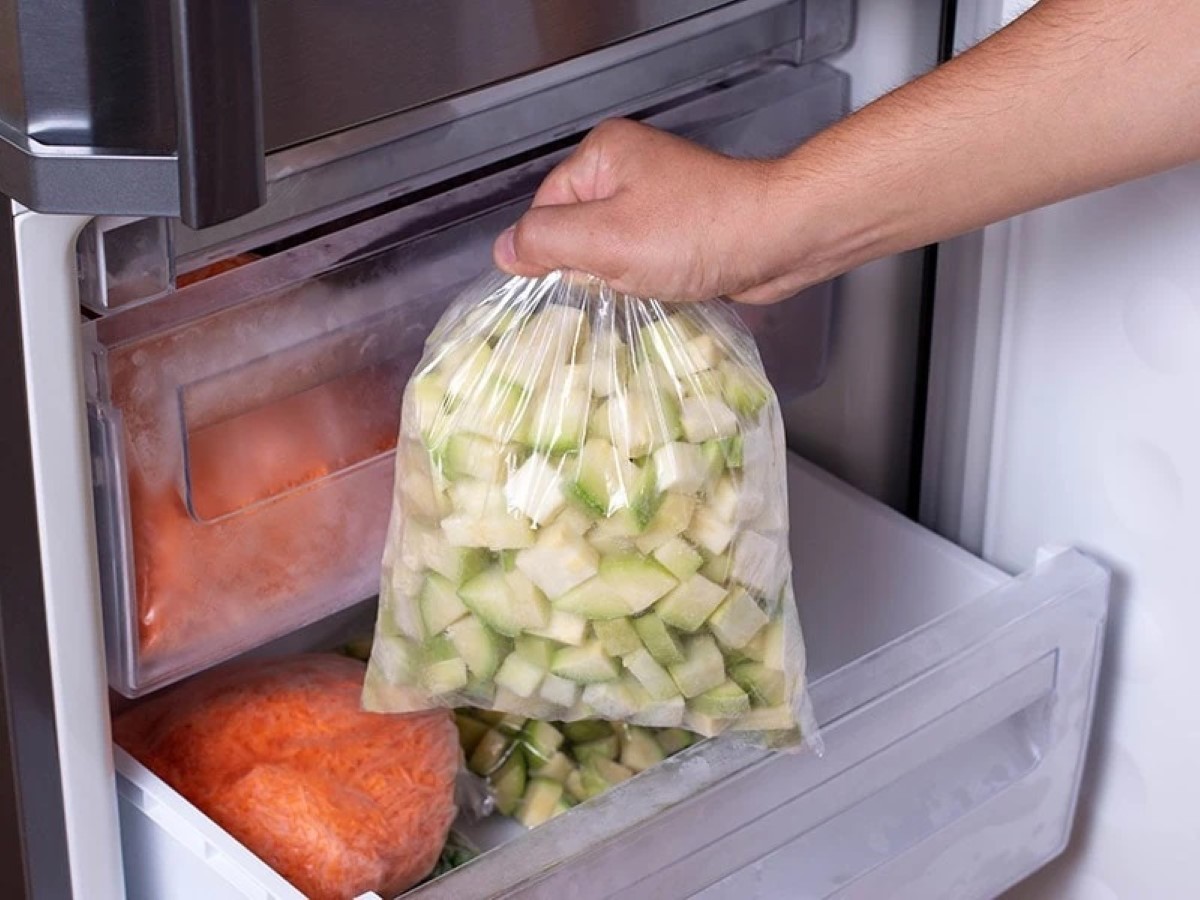

Articles
How To Store Zucchini Noodles
Modified: December 7, 2023
Learn how to store zucchini noodles in this informative article. Discover tips and tricks to keep your zoodles fresh for longer.
(Many of the links in this article redirect to a specific reviewed product. Your purchase of these products through affiliate links helps to generate commission for Storables.com, at no extra cost. Learn more)
Introduction
Welcome to the world of zucchini noodles! These delicious and nutritious veggie noodles have become a popular alternative to traditional pasta, thanks to their low-carb and gluten-free qualities. Not only are zucchini noodles a healthy option, but they’re also incredibly versatile and can be used in a variety of dishes.
However, if you find yourself with a surplus of zucchini noodles or want to prepare them in advance for convenience, it’s important to know how to store them properly. By following the right storage techniques, you can ensure that your zucchini noodles stay fresh and maintain their flavor and texture.
In this article, we will explore the benefits of storing zucchini noodles, share tips on choosing the right containers, provide steps for preparing zucchini noodles for storage, and discuss the best methods for storing them in the refrigerator and freezer. We’ll also provide useful tips for maintaining their freshness and offer guidance on reheating them when you’re ready to enjoy a delicious zucchini noodle dish. So let’s dive in!
Key Takeaways:
- Storing zucchini noodles offers convenience, reduces food waste, and preserves nutrients. Choose the right containers, prepare them properly, and follow recommended storage methods for optimal freshness and flavor.
- Reheat zucchini noodles by sautéing, microwaving, boiling, or adding to warm sauces. Enjoy their versatility in various dishes and embrace the convenience of having healthy veggie noodles readily available.
Read more: How To Store Zucchini
Benefits of Storing Zucchini Noodles
Storing zucchini noodles properly not only helps you maintain their freshness but also offers several benefits that make meal planning and preparation easier. Here are some key advantages of storing zucchini noodles:
- Convenience: By preparing and storing zucchini noodles ahead of time, you can save precious minutes during busy weekdays. Having them readily available means you can quickly whip up a healthy meal without the need for extensive prep work.
- Reduced Food Waste: Zucchini noodles have a relatively short shelf life, and if not stored correctly, they can quickly spoil. By learning the proper storage techniques, you can extend the lifespan of your zucchini noodles and reduce food waste.
- Budget-Friendly: Zucchini noodles are a budget-friendly option compared to traditional pasta. Storing them allows you to take advantage of sales or bulk purchases, helping you save money in the long run.
- Preserve Nutrients: When stored properly, zucchini noodles retain their nutritional value, including vitamins and minerals. This ensures that you are still getting the maximum health benefits from your veggie noodles, even after they have been stored.
With these benefits in mind, let’s move on to understanding how to choose the right containers for storing zucchini noodles!
Choosing the Right Container for Storing Zucchini Noodles
When it comes to storing zucchini noodles, choosing the right container is essential to maintain their freshness and prevent them from drying out or becoming soggy. Here are some considerations to keep in mind:
- Airtight Containers: Select containers that have airtight seals to keep moisture in and prevent air from entering. This helps maintain the texture and flavor of the zucchini noodles.
- Glass or BPA-free Plastic: Opt for glass containers or BPA-free plastic containers. They are non-reactive and won’t absorb any unwanted flavors or chemicals from the food.
- Size Matters: Choose containers that are appropriately sized for your zucchini noodles. Avoid leaving excess empty space, as this can lead to quicker spoilage.
- Divided Containers: Divided containers are a great option if you plan to store zucchini noodles with other ingredients or sauces. Keeping them separate helps maintain the integrity of each component.
- Transparent Containers: Opt for transparent containers whenever possible. This allows you to see the contents easily without having to open the container, reducing exposure to air and potential contaminants.
Remember to wash and thoroughly dry your chosen containers before using them to store zucchini noodles. Clean containers help prevent the growth of bacteria and extend the shelf life of your noodles.
Now that you have selected the perfect container, let’s move on to preparing the zucchini noodles for storage!
Preparing Zucchini Noodles for Storage
Before storing zucchini noodles, it’s important to properly prepare them to ensure optimal freshness and texture. Here’s how to prepare your zucchini noodles for storage:
- Freshly Spiralize: Start by spiralizing your zucchini using a spiralizer or julienne peeler. This will give you long, thin strands resembling noodles.
- Remove Excess Moisture: Zucchini has a high water content, so it’s crucial to remove excess moisture before storing. You can achieve this by sprinkling salt on the zucchini noodles and allowing them to sit for around 10 to 15 minutes. The salt will draw out the moisture, which can then be gently squeezed or blotted with a clean kitchen towel.
- Blanch (optional): If you prefer to blanch the zucchini noodles before storing, bring a pot of water to a boil and add the noodles. Let them cook for 1-2 minutes until slightly softened, then immediately transfer them to an ice bath to stop the cooking process. Drain and pat dry.
- Portion Control: Consider portioning your zucchini noodles before storing. This makes it easier to grab the desired amount when cooking, reducing waste and ensuring that you have the right amount for your meal.
- Label and Date: Lastly, label your containers with the contents and date of preparation. This helps you keep track of freshness and ensures that older zucchini noodles are used first.
By following these steps, you’ll be well-prepared to store your zucchini noodles and retain their quality until you’re ready to use them. Next, let’s explore the best methods for storing zucchini noodles in the refrigerator and freezer.
Storing Zucchini Noodles in the Refrigerator
The refrigerator is an ideal place to store zucchini noodles if you plan to use them within a few days. Here’s how to store zucchini noodles in the refrigerator:
- Airtight Container: Transfer your prepared zucchini noodles into an airtight container.
- Seal Properly: Make sure the container is tightly sealed to prevent air from entering.
- Store in the Fridge: Place the container in the refrigerator, preferably in the crisper drawer. This area helps maintain a slightly higher humidity, which keeps the zucchini noodles from drying out.
- Keep Away from Moisture: Avoid storing zucchini noodles near any high-moisture produce items, as this can increase their chances of becoming soggy.
- Best Used Within 3-4 Days: Zucchini noodles stored in the refrigerator are best consumed within 3-4 days for optimal flavor and texture. Beyond that, they may start to lose their freshness and become mushy.
Remember to check on your zucchini noodles regularly and discard them if you notice any signs of spoilage, such as a slimy texture or unpleasant odor.
Now that you know how to store zucchini noodles in the refrigerator, let’s explore the best methods for freezing them for longer-term storage!
To store zucchini noodles, place them in an airtight container lined with paper towels to absorb excess moisture. Store in the refrigerator for up to 3 days.
Read more: How To Store Half A Zucchini
Storing Zucchini Noodles in the Freezer
If you want to store zucchini noodles for an extended period, the freezer is your best option. Follow these steps to properly store zucchini noodles in the freezer:
- Flash Freeze: After preparing your zucchini noodles, spread them out on a baking sheet in a single layer. Make sure the strands are not clumped together.
- Pre-Freeze: Place the baking sheet with the zucchini noodles in the freezer for about 1-2 hours or until they are partially frozen. This pre-freezing step prevents the strands from sticking together when stored in bags or containers.
- Portion and Package: Once the zucchini noodles are pre-frozen, remove them from the baking sheet and portion them into individual servings or desired quantities. Place each portion in a freezer-safe bag or airtight container.
- Label and Seal: Label each bag or container with the contents and date of freezing. Make sure to remove as much air as possible from the bags before sealing them to prevent freezer burn.
- Freeze: Place the bags or containers in the freezer and make sure they are stored in a flat position to save space. If using bags, you can also lay them flat to stack more easily.
- Best Used Within: Zucchini noodles stored in the freezer can be kept for up to 3-4 months. While they will remain safe to eat for longer, they may start to lose quality and flavor over time.
When you’re ready to use the frozen zucchini noodles, simply take out the desired portion and thaw them in the refrigerator overnight. You can then cook or reheat them as desired.
Now that you’re familiar with storing zucchini noodles in the freezer, let’s explore some tips for maintaining their freshness!
Tips for Maintaining Freshness of Zucchini Noodles
To ensure that your zucchini noodles stay fresh and maintain their quality for as long as possible, here are some helpful tips:
- Avoid Overcooking: When preparing zucchini noodles for storage, be careful not to overcook them. Overcooked noodles can become mushy and lose their texture after being stored.
- Don’t Salt in Advance: While salting zucchini noodles helps remove excess moisture, it’s best to salt them just before cooking or incorporating them into your dish. Salting in advance can make the noodles release too much moisture, resulting in a soggy texture.
- Handle with Care: When transferring the zucchini noodles to storage containers, handle them gently to avoid breaking or damaging the strands.
- Store in the Right Area: In the refrigerator, store zucchini noodles in the crisper drawer, away from moisture-rich produce items. In the freezer, make sure to store them in a part of the freezer that maintains a consistent freezing temperature.
- Use Quality Containers: Invest in high-quality, airtight containers or freezer bags to ensure proper sealing and prevent freezer burn.
- Rotate the Stock: When storing zucchini noodles, place newly prepared ones at the back of the fridge or freezer and bring older ones to the front. This helps ensure that you use the older noodles first, avoiding any potential waste.
- Label and Date: Always label the storage containers with the contents and date of preparation or freezing. This makes it easier to keep track of freshness and minimize food waste.
- Follow Recommended Storage Times: While zucchini noodles can be stored for longer periods, it’s best to consume them within the recommended storage times for optimal flavor and texture.
By following these tips, you can maintain the freshness and quality of your zucchini noodles, whether stored in the refrigerator or freezer.
Now, let’s move on to the topic of reheating stored zucchini noodles!
Reheating Stored Zucchini Noodles
When you’re ready to enjoy your stored zucchini noodles, reheating them properly is crucial to maintain their texture and flavor. Here are a few methods for reheating zucchini noodles:
- Sautéing: One of the easiest ways to reheat zucchini noodles is by sautéing them in a pan. Heat a little olive oil or butter in a skillet over medium heat and add the noodles. Cook for a few minutes, stirring occasionally until heated through.
- Microwaving: If you’re looking for a quick option, microwaving is a convenient way to reheat zucchini noodles. Place the desired portion in a microwave-safe dish, cover loosely, and microwave in 30-second intervals until heated to your liking.
- Boiling: Another method is to briefly boil the zucchini noodles. Bring a pot of water to a boil, add the noodles, and cook for a minute or two. Drain them and pat them dry before using them in your dish.
- Adding to Warm Sauces or Soups: If you’re preparing a sauce or soup, you can simply add the frozen or refrigerated zucchini noodles directly to the warm sauce or soup. Let them simmer gently until heated through.
Remember, since zucchini noodles have a high water content, they may release some moisture when reheated. Be sure to drain any excess liquid before incorporating them into your dish.
Once reheated, you can use the zucchini noodles in various recipes, such as stir-fries, pasta dishes, salads, or as a side alongside your favorite proteins. Get creative and enjoy the versatility of zucchini in noodle form!
Now, let’s summarize what we’ve learned so far.
Conclusion
Storing zucchini noodles properly is essential to preserve their freshness, flavor, and texture. By following the right techniques for storing in the refrigerator or freezer, you can ensure that you always have a convenient and healthy option readily available for your meals.
From the benefits of storing zucchini noodles to choosing the right containers, preparing them for storage, and using the recommended methods for refrigerating or freezing, you now have the knowledge to keep your zucchini noodles fresh for a longer period.
Remember to follow the tips for maintaining freshness, such as handling the noodles with care, using quality containers, and rotating your stock. By reheating the stored zucchini noodles properly, you can enjoy them in various dishes without compromising their taste and texture.
Zucchini noodles offer a versatile and nutritious option for those looking to incorporate more vegetables into their diet or follow a low-carb or gluten-free lifestyle. With proper storage, you can embrace the convenience of zucchini noodles and save time during busy days.
So go ahead and prepare your zucchini noodles in advance, store them properly, and get creative with the endless possibilities of delicious zucchini noodle recipes. Whether you’re sautéing, microwaving, or adding them to your favorite sauces and soups, zucchini noodles are sure to be a flavorful and healthy addition to your meals.
Enjoy the benefits of storing zucchini noodles and elevate your culinary experience with these wonderful veggie noodles!
Frequently Asked Questions about How To Store Zucchini Noodles
Was this page helpful?
At Storables.com, we guarantee accurate and reliable information. Our content, validated by Expert Board Contributors, is crafted following stringent Editorial Policies. We're committed to providing you with well-researched, expert-backed insights for all your informational needs.















0 thoughts on “How To Store Zucchini Noodles”